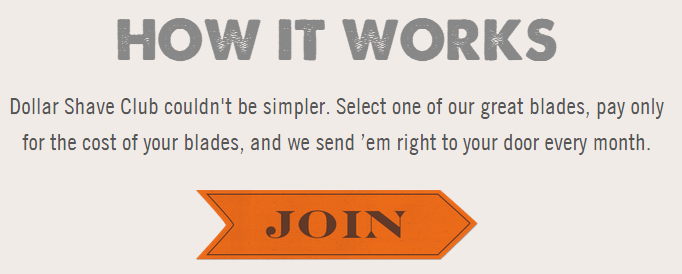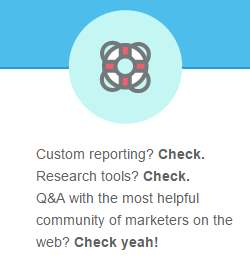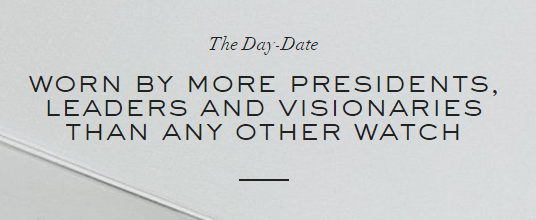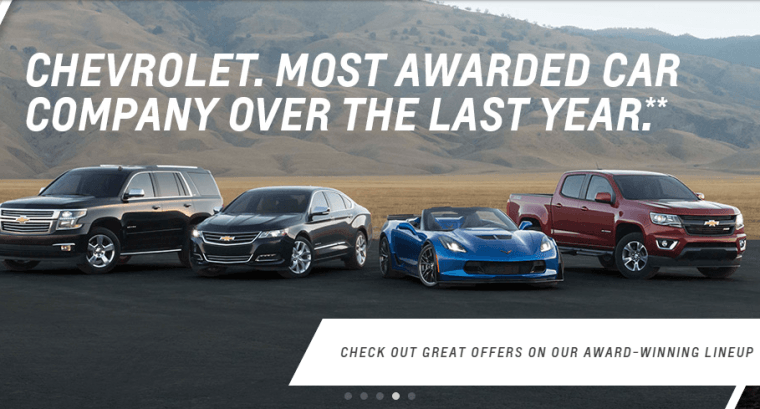Creating a good call to action takes time and creativity. Imagine being able to come up with an amazing call to action within mere seconds – here’s how!
See what I did there? I just used a call to action (CTA) to hopefully peak some interest in what I have to share with you.
The truth is that as marketers, we have to come up with hard and soft CTAs multiple times a day for product ads, content pieces, company assignments, and more. If you are like me, it can get very tiresome trying to rack your brain for creative ways to pitch something that hopefully turns into action over and over again.
To help you save some time in this endeavor, I’ve created a so-called “cheat sheet” that shows twenty different ways to write a CTA, in the hopes that it will spur your creativity and drastically shorten the time it takes to come up with a great CTA.
1. Instant Gratification
People hate waiting… for anything. Capitalizing on this fact is a great way to get people to respond to what you are offering if speed is the main draw.
This type of CTA does a great job implying that someone can get a quick answer, or help preparing their entire tax return.
2. Pull at the Heartstrings
Using emotion can be a powerful motivator to get someone to act on something. The 2015 Super Bowl had more emotionally motivated ads than I’ve ever seen in one sitting. Case in point, the #LikeAGirl ad from Always had me shoveling in guacamole dip with tears in my eyes.
This emotional CTA works on a few levels. First, it makes you feel like a schmuck if you have ever used “like a girl” as a negative connotation in conversation. Second, it uses that shame to motivate you to be a part of their movement against damaging social norms.
3. Situational
If you need a CTA for a specific demographic or niche, creating situational context is a great strategy to acquire relatable action.
This CTA draws in people who do have coffee delivered while implying that lower shipping rates would change the way they think or worry about it.
4. Problem Aggravation
Many marketers view this type of CTA to be one of the most popular and successful formats out there. This formula works by identifying an issue, explaining what would happen if the problem persisted, and then ultimately solving it.
By aggravating the problem, you can create motivation based on what people don’t want to experience if they wait to act.
5. Implication & Effect
This is very similar to a problem solving CTA, with the main difference being that you lead with the question regarding the effects or impact of a problematic situation.
Essentially, this really lays it on thick when it comes to the possible pains they are currently experiencing related to the problems they face.
6. People Want to Belong
People don’t like feeling like they are missing out on something that everyone else is already having fun experiencing. Sites like MailChimp do a great job of making it feel like everyone else is doing it the easy way using their service, so why not join them by signing up?
7. How it Works
Sometimes just cutting to the chase and letting people know exactly how your offering works is a good strategy.
This CTA does a great job of spelling out what it is they do and how it works without the need for too much creativity.
8. Focus on the Features
Every product or service has certain features that set it apart. Using this strategy is a great when you sell in a saturated marketplace to help you stand out from the crowd.
This CTA is a good example of listing several features in order to clearly convey some of the perceived bells and whistles a product or service may offer.
9. Focus on the Benefits
This is another widely used strategy for CTA’s, and for good reason! Focusing on the benefits of a product or service over the features is a great way to show the consumer what they can experience AFTER they act.
10. Sell the Savings
For people who just want to save money on a product in a marketplace, blatantly telling them what those savings are is often enough to get a response.
While auto insurance isn’t necessarily the most exciting thing to buy, the possibility of saving more than $500 is the pull here that warrants action from a consumer. Also, the curiosity of whether or not you could save that much is a great motivator to get someone to request a quote.
11. Using Fear
How exactly can fear be used to motivate in a CTA? I like the way Andrew McDermott explains it:
“It screams consequences, danger, and loss. It’s the screeching tires that flood your body with adrenaline, the Hells Angel parked next to you, and the police sirens behind you. It focuses on what is most feared, not what’s most likely to happen.”
In the example below, the CDC does a great job using fear to get people to take action.
 12. Individualize the Message
12. Individualize the Message
Who exactly are you writing the CTA to? Can you imagine who they are and what type of persona they embody? The better you can visualize who you are speaking to, the easier it will be for your to craft a great CTA.
For instance, if I’m writing a CTA for a small business owner without a large web presence, I don’t want to focus on a big enterprise level piece of SEO software with millions of reports. A small business owner isn’t concerned with all that. All they want to see is an increase in sales.
13. Use a Cliffhanger
We all love a good story, but when we don’t get to hear the ending it can drive us crazy! Hollywood does a great job with this concept by turning a story into three separate movies in order to keep you on the hook to see them all in order to find out how the story ends.
Playing off of the anxiety people feel when they don’t know how a story ends is a great way to motivate action.
14. Make it a Game
What is the best part about a game show? The ridiculous prizes one can win just by participating! Gamify your CTA in order to get a crazy amount of responses.
CTAs like this perform really well because the customer basically says to themselves, “What do I have to lose?” This type of thinking makes them focus less on the personal information they are giving up and more on the possible prize(s) they may win.
15. Offer a Bonus
Who doesn’t want an extra freebie when they sign up for a service or buy a product?
Sprint is dialing in on the “Why not?” feeling of its potential customers by offering the bonus of paying off their existing phone plans with this CTA.
16. Stroke the Ego
Validating people’s accomplishments and knowledge is deeply rooted in our society as humans. Many of us feel like we deserve something because of who we are. Playing to this need is a great way to create an impactful CTA.
This example from Rolex clearly plays to someone’s ego by making them feel like they are joining a distinguished club by wearing one of their watches.
17. Build Some Hype
I really like how Brian Lett describes how to build hype around your products or offerings by channeling the passion and example of Steve Jobs.
“Don’t just talk about what your product does or why it’s superior; show them a compelling picture of how it’s going to make their life better. That’s what gets people excited.”
18. Toot Your Own Horn
Awards are meant to be shown off, so if you have them, flaunt them in your next CTA. Touting awards or accomplishments instantly creates a sense of credibility and trust with potential customers who may not understand the difference between what you are offering and your competitor.
Most people are motivated by having something that is considered the best or that is highly rated, and showing off awards in a good CTA feeds that motivating factor.
19. Stopping Power
Have you ever been told to stop doing something? We all have, and it’s not very pleasant.
Nobody likes to think they have been doing something wrong or wasteful; however, when you are told to stop something your interest immediately piques and your attention and emotion sensors are ready and waiting to respond.
 20. Picture This
20. Picture This
The power of the imagination is definitely a force to be reckoned with when it comes to piquing interest.
Copywriter Brian Clark puts it this way:
“Producing a mental image in a reader’s mind is one of the most powerful things you can ever do as a writer, so expressly engaging the imagination is a powerful opening technique. Activate the mind’s eye of the reader by using words like “imagine,” “picture this,” “do you remember when,” etc.”
 Conclusion
Conclusion
I hope that some of these ideas will help you form awesome CTAs more quickly. If one of these CTA formulas works well for you and your readers, don’t be afraid to go back to it often.
At the same time, if you ever feel like your CTA’s are getting stale, don’t be afraid to try something new from this list – the only way to get different results is to try something new!
Looking for even more CTA ideas? If so, go check out fellow SEJ author Kevan Lee’s amazing post on how to grab a reader’s attention. Thanks for the inspiration Kevan!
Are there any CTAs from the list that you use with great success? Are there other types of CTAs that I missed that you feel are worth sharing?
If so, I’d love to hear about it in the comments below.
Image Credits
Featured Image: 123RF Stock Photo (Modified)
Image #11: CDC image. Used under license.
Other images created by author for Search Engine Journal






















![AI Overviews: We Reverse-Engineered Them So You Don't Have To [+ What You Need To Do Next]](https://www.searchenginejournal.com/wp-content/uploads/2025/04/sidebar1x-455.png)